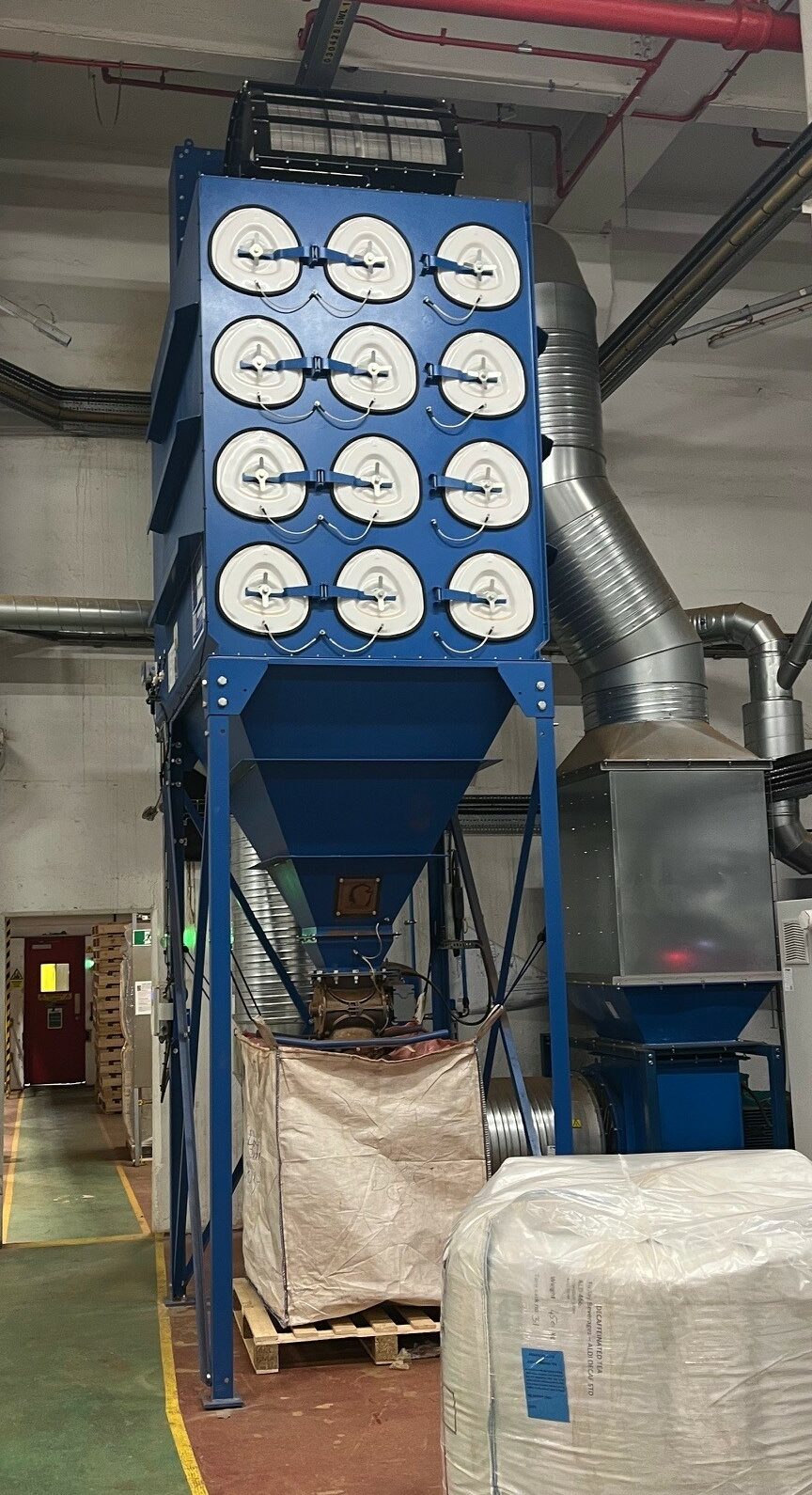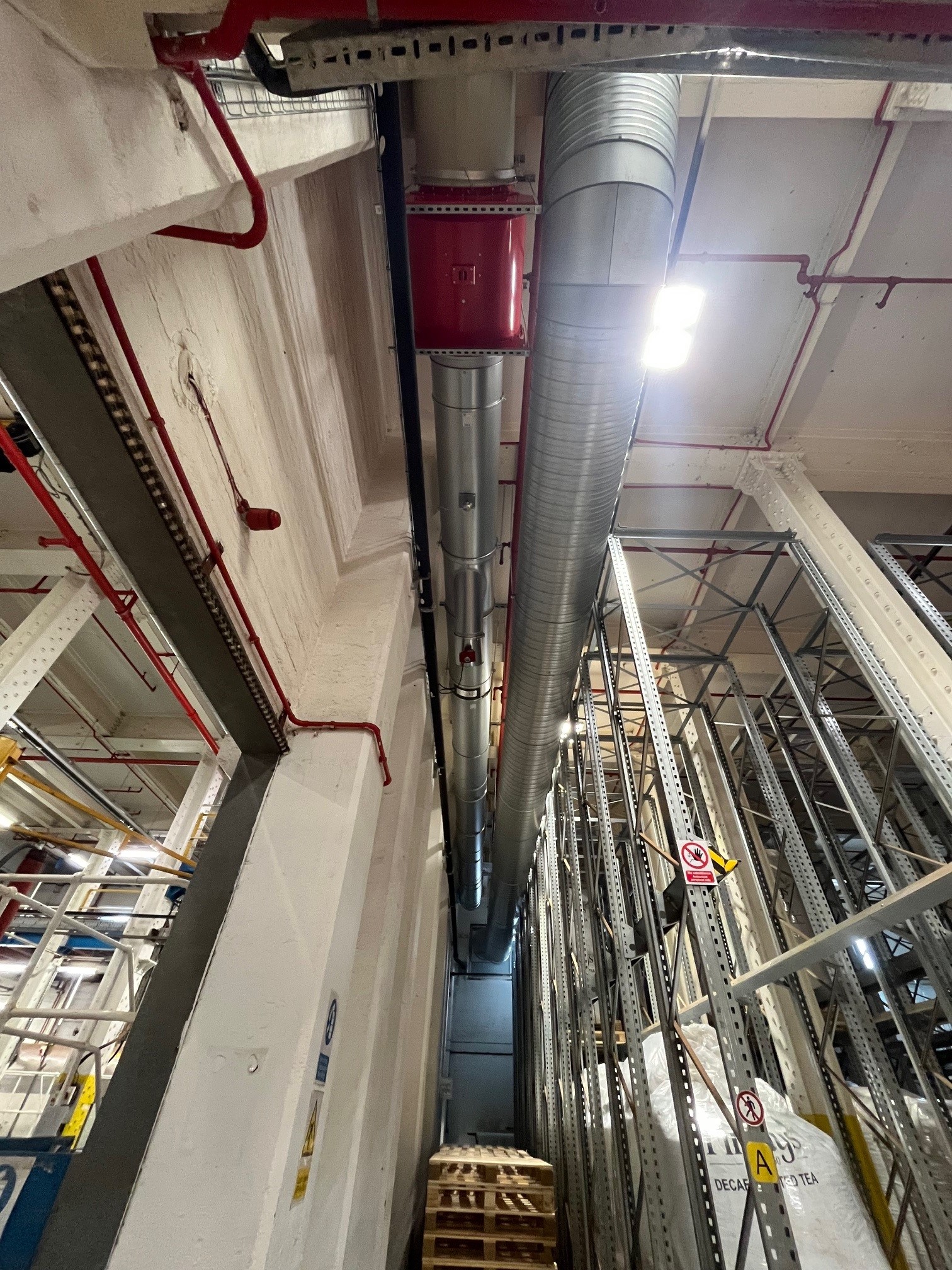Case study: Designing and installing a dust collector system for Finlay Beverages
Matt Brown | Published August 26th 2025 | Updated September 24th 2025
We recently worked with Finlay Beverages, the UK’s leading own-brand partner in tea and coffee, to install a dust collector system which could collect the fine dust created during their fluid bed drying process.
Finlay Beverages, based in Yorkshire, is the UK’s leading own-brand partner in tea and coffee, sourcing, packing, and supplying a wide range of tea and coffee formats to UK retail and foodservice customers.
It’s been serving the UK since 1896, with its state-of-the-art processing facility supplying many of the biggest retailers and foodservice chains in the country.
One of the processes undertaken at Finlay Beverage’s Hull facility is fluid bed drying, which dries the tea leaves ready for further processing.
This process generates fine tea dust, which can enter the atmosphere. We needed to design a system which would collect this dust, along with the valuable caffeine which is removed during the process of making decaffeinated tea.
This was our second project with Finlay Beverages – we previously worked at their site in Pontefract where the coffee beans are processed.

Challenge
The challenge was to replace an old wet scrubber system used by Finlay Beverages, which was very expensive to operate, with a high KW fan, and huge water usage. The system also created sludge waste, which needed to be disposed of.
Finlay Beverages needed a new more cost-effective system, which could help them increase the efficiency of their operations.
We only had a short period of time to install the new system, with dust extraction critical to Finlay Beverages’ processes. Without a dust collector system in place, the company would be unable to produce decaffeinated tea.
The installation took place in a tight space, requiring detailed planning and organisation beforehand, with APS designing a bespoke system to fit Finlay Beverage’s needs.
Solution provided by APS
We installed a Donaldson DFE reverse jet dust collector with ATEX features, including an indoor explosion venting device and ATEX non return valve, a hopper with rotary airlock into an FIBC (Flexible Intermediate Bulk Container, or big bag), and a floor mounted fan with clean air discharge ductwork to outside (long duct run).
The system has a main control panel with a Siemens PLC & HMI control system; and there is a temperature probe in the ductwork to protect the dust collector in case of temperature spikes from the dryer.

Benefits and outcomes
The dust collector removes dust generated during the fluid bed drying process, increasing operational efficiency, and helping Finlay Beverages to meet regulations surrounding the health and safety of staff at work.
The caffeine removed during the process is a valuable product which is sold to Europe and the USA, to be used in things such as energy drinks and supplements. We also installed an extraction system at Finlay Beverage’s Pontefract facility, where coffee is processed.
The ATEX-certified features of the system are designed to prevent the ignition of explosive atmospheres, further increasing the safety of Finlay Beverage’s factory environment.
Matt Brown, Sales Director at APS said: “We were pleased to work with Finlay Beverages to help replace an old wet scrubber system which was no longer practical or economically viable. The new dust collector system we installed removes dust at source, and bags it separately, meaning Finlay Beverages no longer has to go through the process of removing additional sludge waste. High quality dust extraction system installations such as ours also help with regulatory compliance, and maintain product quality, whilst maximising the efficiency of production lines.”
Are you looking to install a new dust collector system? Get in touch with our expert team today.


We Consult
Understanding is key. We take the time to grasp your specific requirements, ensuring solutions tailored just for you.

We Design
With your needs as our blueprint, we craft designs that are both functional and in step with modern aesthetics.

We Install
Our team prioritises a smooth, efficient installation process, minimising disruption while focusing on optimal safety outcomes.